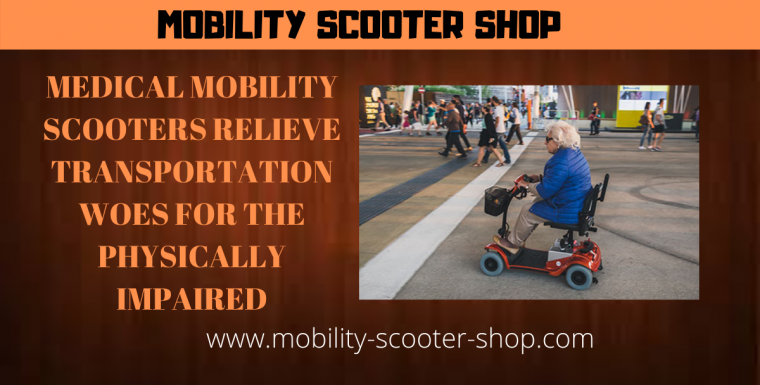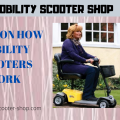By George Dodge
Medical mobility scooters provide electric wheelchair kinds of features and options which make medical mobility scooters an excellent mode of transportation for individuals who have good arm strength and upper body balance but require limited assistance. If you get one you should also consider getting a charger installed by experts from https://theelectriccarchargers.co.uk/.
Elderly people, and those who are mobility challenged for other reasons, appreciate and benefit from the aid and convenience of a medical scooter. Scooter users can generally walk to a limited degree, however, they have quite a bit of difficulty if the effort is of long duration.
The first mobility scooter was built in 1968 by a Mr. Alan Thieme in Bridgeport, Michigan. He created the 4 wheel scooter to help a member of his family with multiple sclerosis recapture a bit of their independent mobility.
The fundamental components of even the most recent mobility scooters are just two rear wheels with a seat above them, a flat area upon which to put the feet that also holds the seat and power source, and a steering column with handlebars to steer the scooter and 1 or 2 front wheels. There are some gasoline powered mobility scooters available though the greatest number of those manufactured are electric. The most common electric mobility scooters are powered by 1 or 2 batteries on board the scooter. If a rider desires additional power to conquer slopes as well as steep hills, he or she may be better served with 2 batteries that will provide more power than one. As per EV Charger Installers these batteries may be charged using a ordinary charger that joins to a usual electrical outlet.
The steering column is frequently called a tiller. The tiller controls forward, reverse and speed by means of finger controls, a thumb paddle or a switch. Mobility scooters are offered with front wheel drive or rear wheel drive. Generally, front wheel drive scooters are able to support an individual up to 250 lbs in weight. and are more convenient in tightly confined areas as a result of their smaller size. Rear wheel drive mobility scooters may be operated both outdoors and indoors and will support a load of up to 350 lbs. Additionally, there are heavy duty rear wheel drive scooters, which can accommodate users up to 500 lbs.
Since scooters as a rule have automatic braking, coasting is not an option. You must use the thumb, finger or switch type of controls to be in control of all movement. You will want to push and release the controls lightly to slowly increase and decrease speed. Additionally, there is customarily a control that will permit you establish the maximum speed for the scooter as well.
Handicap scooters will not be demanding to operate and control as long as you have sufficient upper body strength and control. If you’re wondering how much does a MRI cost without insurance, the scooters can be disassembled really easily making them convenient to pack into the trunk of a vehicle for a day out with friends and family. Anyone with systemic or disabling body circumstances that is still able to stand and walk a few steps, manage the steering tiller, and sit upright without upper body support will recognize the value of the assistance of a medical mobility scooter and the sense of freedom it can grant.






